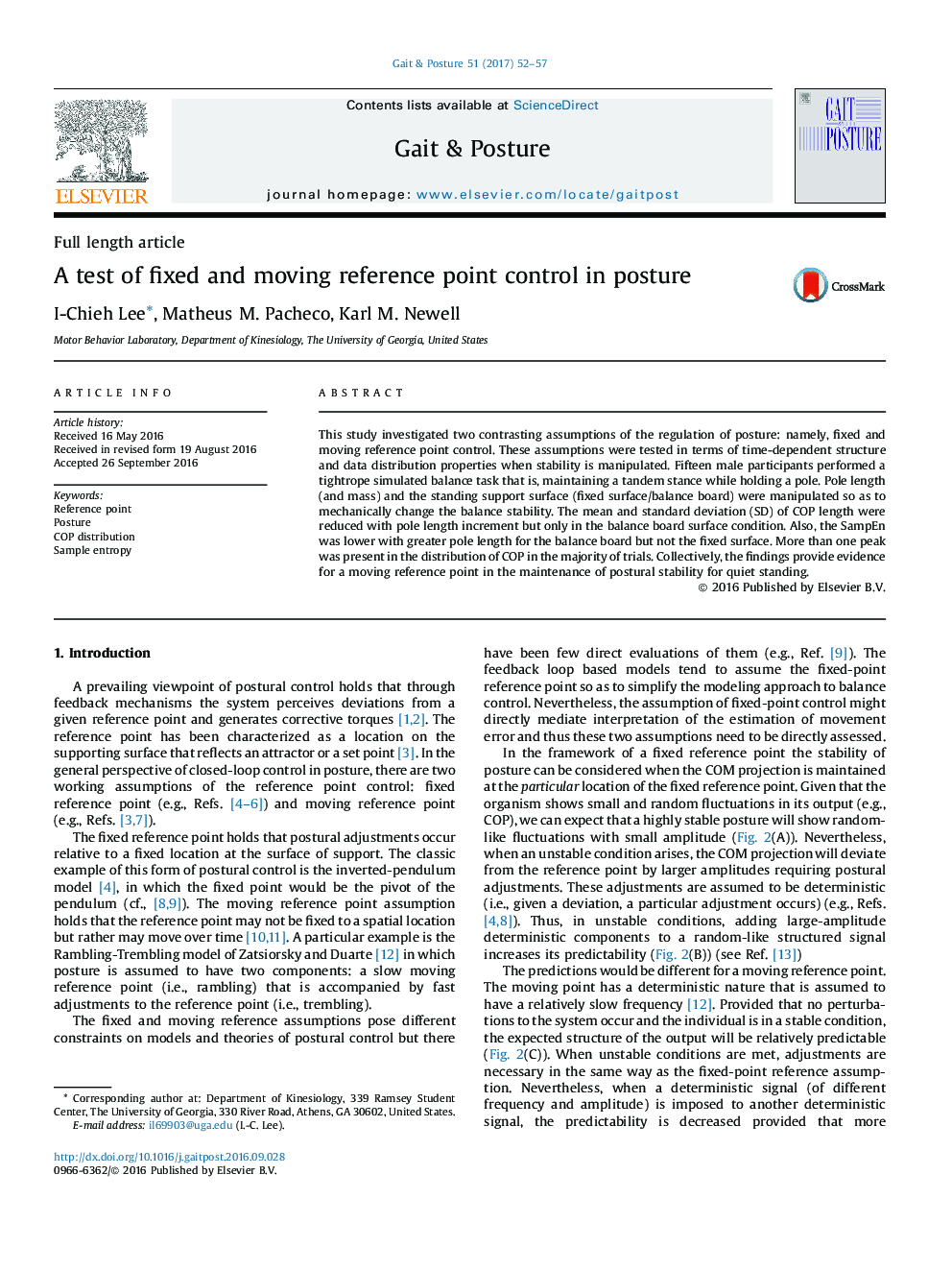| Article ID | Journal | Published Year | Pages | File Type |
|---|---|---|---|---|
| 4055510 | Gait & Posture | 2017 | 6 Pages |
•We tested two main assumptions of postural control: fixed and moving reference point.•Stability of balance was mechanically manipulated through a simulated high-wire walking task (tandem position).•The time–dependent structure and the distribution of center of pressure were explored.•The findings support the moving reference assumption.
This study investigated two contrasting assumptions of the regulation of posture: namely, fixed and moving reference point control. These assumptions were tested in terms of time-dependent structure and data distribution properties when stability is manipulated. Fifteen male participants performed a tightrope simulated balance task that is, maintaining a tandem stance while holding a pole. Pole length (and mass) and the standing support surface (fixed surface/balance board) were manipulated so as to mechanically change the balance stability. The mean and standard deviation (SD) of COP length were reduced with pole length increment but only in the balance board surface condition. Also, the SampEn was lower with greater pole length for the balance board but not the fixed surface. More than one peak was present in the distribution of COP in the majority of trials. Collectively, the findings provide evidence for a moving reference point in the maintenance of postural stability for quiet standing.
